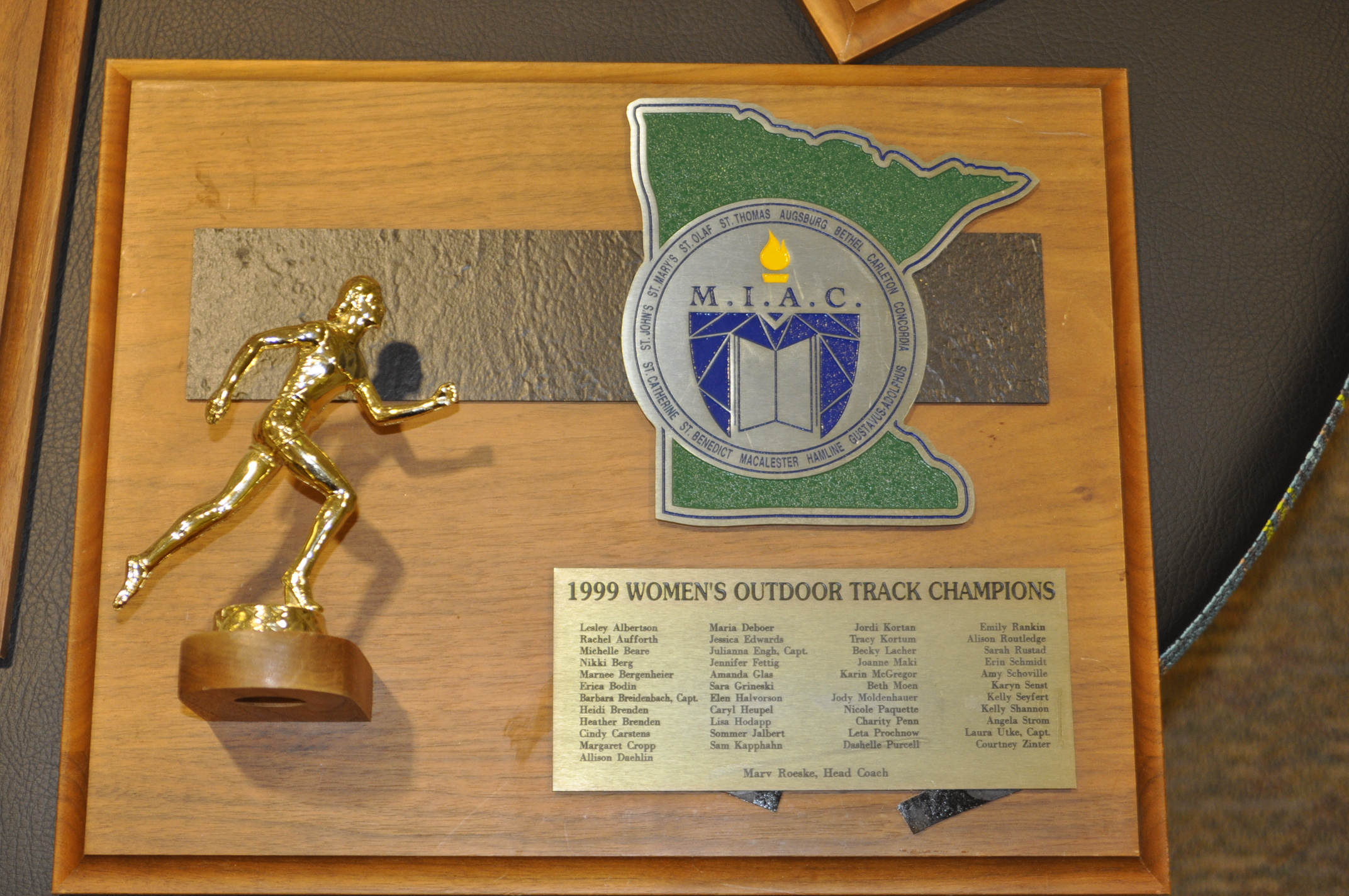MOORHEAD – A group of championship track and field athletes from the 1998, 1999 and 2004 teams returned to the school on Saturday, Sept. 28.

The women’s team especially is known for their unprecedented back-to-back wins in ‘98 and ‘99 against St. Thomas.
St. Thomas, at the time, ruthlessly dominated the leaderboards of Division III Minnesota Track and Field.
Both their men’s and women’s teams won championship after championship, leaving other schools to fight for second and third place.
In both the indoor and outdoor track season, they shut down their competition, the men never lost an indoor season from 1985 all the way to 2020.
College level track and field includes both an indoor season that usually runs from January to February or March, with outdoor season occurring immediately after until May.
At the end of the 2020–2021 season, St. Thomas was involuntarily removed from the Minnesota Intercollegiate Athletic Conference (MIAC), after concerns over parity between schools.
With St. Thomas’s exit from Division III into Division I athletics, the only two schools in the MIAC will ever be able to say that they beat their women’s team is St. Olaf and Concordia College.
For the outdoor season, St. Olaf won the MIAC championships in 1985, and Concordia in 1999 and 2004.
For the indoor season, Concordia won the championships in 1988, 1998 and 1999.

“No men’s team in that same time frame, won both other than St. Thomas,” says Marv Roeske, longtime head coach of the Concordia womens track team.
It was a major upset and halted the Tommies’ 14-year winning streak.
“I didn’t know it was a big deal,” Roeske said. He had only been head coach for around four years during the ‘99 outdoor win against St. Thomas.
After the meet was over, the men’s head coach, Garrick Larson, took him up to a hill overlooking the track at St. John’s University.
While Roeske didn’t fully grasp the situation, Larson did.
“‘He goes, Marv. You’ve got to just sit here for a moment, look at it and soak it in,’” Roeske said.
Roeske speaks fondly of all his teams, but he admits there are certain aspects of some teams that “stick out a little more.”
The women’s team ‘98 and ‘99 teams were something special.
“They were just a bunch of happy kids,” Roeske said.
It was a tight-knit group, according to Heather Snowden, who was on the women’s track team from 1999-2001.
“You’re with the same people, almost seven days a week, in and out, meals together, morning runs together, afternoon practices, you travel together, and they become your family,” Snowden said.
The team was very strong overall, with high scoring track as well as field athletes.
“Throwing that year was crazy, our hurdlers were crazy. I mean, everything just kind of came together,” Snowden said.
Snowden won the first-ever women’s steeplechase event at Carleton College. In the same meet, she also competed in the 3,000 meter race, placing second.
The steeplechase is a 3,000 meter race in which a series of barriers are set up, one with a pit of water behind it.
Her twin sister, Heidi Brenden-Selich, also competed on the team.
An “instant family” is how she would describe the team roughly 26 years later.
Brenden-Selich was also a standout athlete on the women’s team, who was named regional athlete of the year and won both the 600 meter and 800 meter race in the ‘99 indoor championship.
She recalled the feeling of winning a MIAC championship and feeling like they had done something unbelievable.
“We are the champions, but we also, like, down with the Tommies,” Brenden-Selich said.
But aside from the winning, the athletes formed a very cohesive group, including both sexes and all event types.
“At Concordia, all the events, we were a family. Men and women,” Snowden said.

